Rock On
Adventure photographer Michael Clark finds plenty of clients for his high-strung commercial work.
• May 2016 issue
Not many people can say they’ve fallen into quicksand. Michael Clark can. “I’ve nearly died several times,” laughs the veteran adventure sports photographer, ticking off his near death experiences: “caught in an avalanche, hit by a beach-ball-sized falling rock, hit by a car on my road bike while training. There are all kinds of exciting days where photography has been the least of my worries.”
The worst, though, was the frayed rope day. Clark was ascending the East Gruesome Spire in the Black Hills of South Dakota for a Climbing Magazine assignment when he looked up and saw his climbing rope bent over a protruding quartz crystal. His first instinct was to push off the wall to free the rope from the rock, but then he noticed the rope was weirdly thin—severed nearly in half by the razor-sharp crystal. Realizing he could fall to his death at any moment, Clark calmly but urgently called up to his climbing partner for a rescue rope, which he tied on to and used to climb to safety. Later, when he recovered the battered rope, he found it had been sawed through to the core. He was literally hanging on by a handful of threads.
“The rope incident was the one where 150 percent I thought I was going to die,” says Clark. “The other ones, they happened so fast, I didn’t really have time to think.”
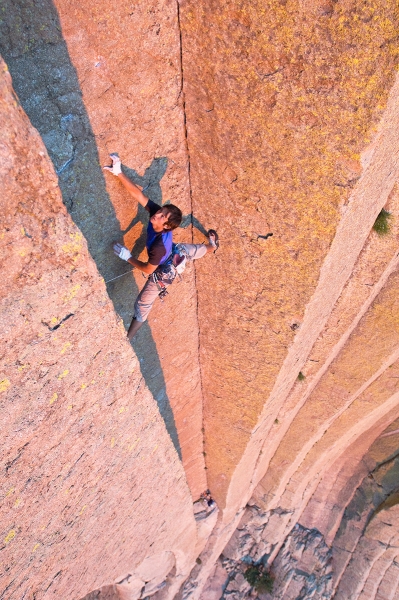
Life on the edge
Not that these brushes with death would ever make Clark rethink his career. Even on the frayed rope day he continued making images of the climbers from the top of the spire, then rappelled down the same rock wall from which he’d nearly plunged hours before.
“I consider my job not a job but a lifestyle,” Clark says. Besides daredevil feats that most photographers couldn’t stomach, it requires the flexibility to travel nearly constantly. “I just got back from Patagonia, now I’m going to Hawaii, and I’m back one day and then I go to Colorado,” he says. It also calls for a deep understanding of adventure sports, a passion that drew Clark to photography in the first place.
“When I was in college, I took a rock climbing course through the university, and it was like surfing—I became obsessed with climbing. I’m lucky I took this course in my last semester of college; otherwise, I might have dropped out,” he laughs. Though he’d taken art classes since childhood, he majored in physics and pursued the field for a couple of years after graduating before abandoning it for a two-and-a-half-year climbing trip. “In that time period I decided that I didn’t want to do physics, that I wanted to be outdoors,” he says, “and I thought, How could I do that? And photography became the viable option.”
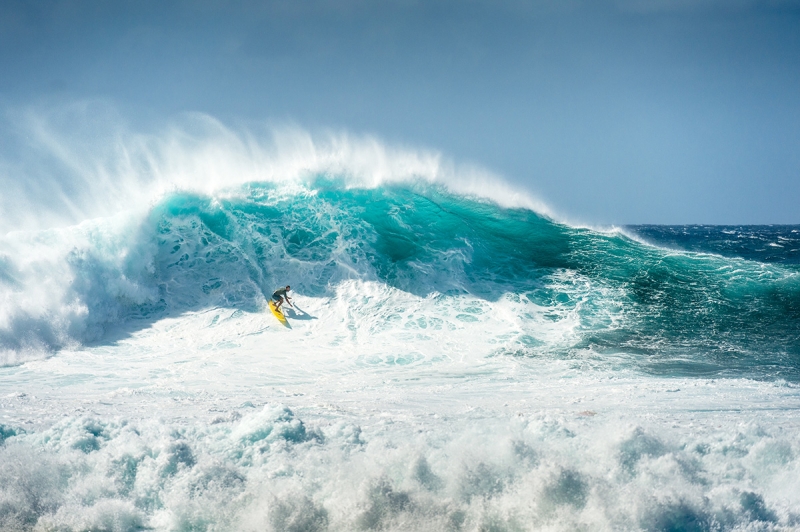
Indeed, Clark’s extensive climbing skills are paramount to his success in adventure sports photography. “I’m not a pro athlete myself. I’m not at that level. But I am photographing them, so I have to be able to stay with them,” he says. Staying with them can mean lots of things: rappelling off a cliff to lean back and capture images of wingsuit flyers as they plunge from above, hanging on to the outside of a plane to shoot photos of skydivers as they plummet, clinging to a boat as it jets up and over 30-foot Tahitian waves—on repeat for 13 hours, five days straight—so he can snap images of surfers.
It’s not easy on the body, Clark admits. (After that five-day surfing assignment, his rear-end was so sore he could barely tolerate sitting on the airplane, he says.) But his climbing background gives him a leg up on almost any adventure sports assignment. “Climbing applies to a huge majority of the other sports,” he says. “Other photographers may not want to rappel down that cliff or set a rope across a gap to get into a wild and crazy position.”
Belay on
Given Clark’s depth for daredevilry, it’s no surprise that one of his clients is Red Bull. “It’s pretty unique shooting for them and extremely demanding because they want amazing image quality every time you go out, which is exciting,” he says. They also have more money to put into their shoots (think helicopters at the ready), since their marketing strategy banks on free, shared photos and videos, and they don’t pay for ad placement.
One Red Bull assignment required Clark to photograph skydivers. Since shooting while skydiving himself would have been like “me driving a Formula One car next to a pro Formula One driver and shooting out the window,” Clark decided to attach his camera, equipped with a fish-eye lens and set to take four frames per second, to one of the skydiver’s helmets. He instructed the diver where to point his head to get the best shots while he fell. “We shot 2,000 pictures in those three minutes,” he says. Meanwhile, Clark took photographs of the falling skydivers while clinging to the plane.
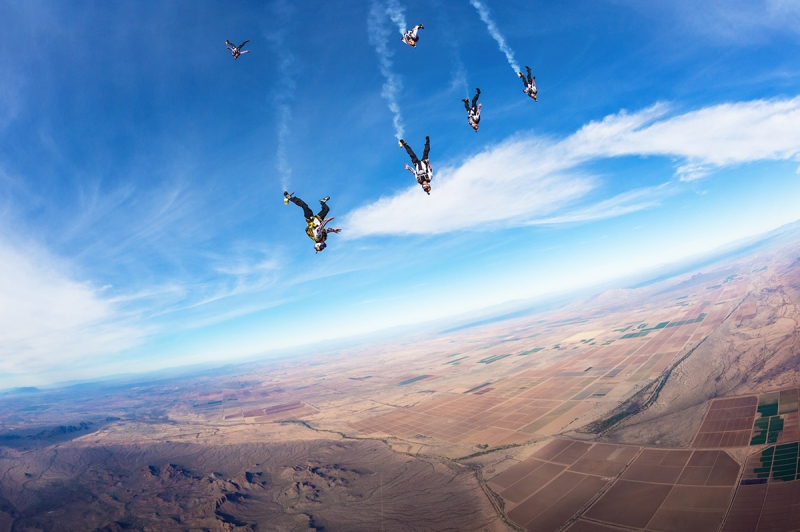
These days, much of Clark’s work is commercial. In addition to Red Bull, Apple and Nikon are clients. And he’s also done work for National Geographic. To jumpstart his career in the early days, he set up his own climbing shoots and licensed stock images to whoever was interested, which eventually led to steady assignments with companies in the outdoors sector. After six years, he branched out from climbing to other sports, enabling him to find new clientele.
One of his most challenging recent assignments involved photographing four different outdoor sports—surfing, climbing, mountaineering, and snowboarding—in different locales over four days in August. Three of the sports were shot in California, and the fourth, snowboarding, was shot in Mount Hood, Oregon, because it has a permanent glacier. The schedule was brutal, he says. “They were 23-hour days, so I only got like 10 to 12 hours of sleep in four days. You are physically pushing yourself to the absolute limit to get the job done.” That’s true of many of his assignments. “Twenty to 30 hours on, and you just recover afterwards.”
Licensing power
Clark supplements his commercial income and diversifies his portfolio by setting up his own shoots and licensing photos after the fact. Lately he’s been focused on surfing; he’s traveled to Hawaii 10 times in eight years. Apple has licensed several of his surfing images from these trips. But to license photos, Clark needs to get eyes on them. And that’s where the Internet comes in.
Clark credits his online visibility to something pretty simple: a newsletter he’s been writing since 2000. The “newsletter” is actually a 30- to 40-page PDF quarterly magazine with stories on recent projects, peeks behind the scenes, equipment reviews, and ads for his workshops and books. It has 8,000 subscribers, some of whom are art and photo buyers, but many of whom are pro or amateur photographers who simply want to follow and learn from Clark’s experiences.
“It takes a lot of work to produce,” says Clark, “but I get a lot of work out of it.” Thanks to the newsletter, he says, when you type “adventure sports photographer” into the Google search engine, Clark’s name shows up first. Having a 15-year-old newsletter that’s consistently covered a niche subject has given him Google cred, he says. In addition, clients often link to his website, providing another pathway to his work.
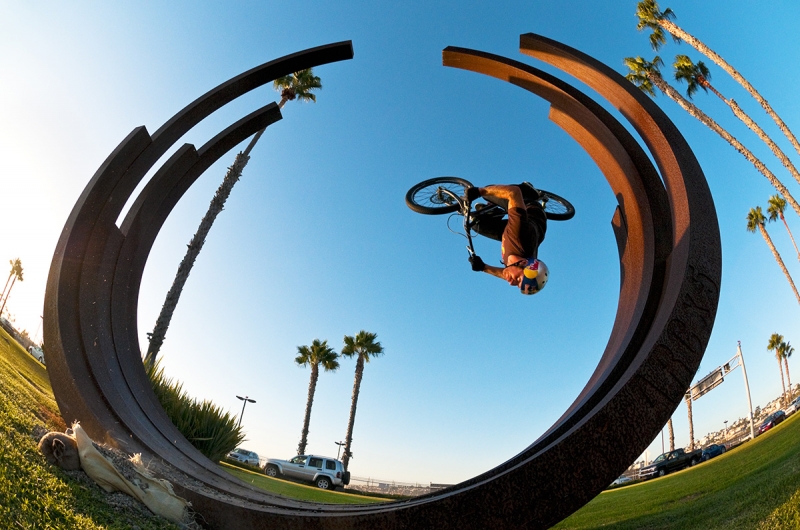
Secret weapons
Clark’s favorite pieces of equipment are the fisheye lens—“understandable for the adventure sports world,” he says—and the strobe. Being able to sync at such high speeds is an amazing benefit to shooting actions sports like BMX, mountain biking, and surfing. To sync the strobes up to 1/8,000 second enables Clark to create images that “nobody has ever seen before—truly new images,” he says. For example, recently he used Elinchrom’s Ranger RX Speed AS strobes to light a surfer from the beach 500 feet away. “And we got it to work, which is a small miracle,” he says.
No, thank you
Given the amount of risk in Clark’s work and in adventure sports in general, it seems both small and large miracles abound. But even Clark has to say no once in a while. For example, “I’m not a surfer, so I’m not swimming out with the giant waves,” Clark says. “That’s much scarier to me than climbing.”
And he’s had experiences where he had to decline when an athlete declared they wanted to do something way too dangerous. For example, during an assignment in Moab, Utah, a mountain biker “wanted to roll over a 150-foot cliff,” he says. Though it would have been the most unbelievable thing ever done on a mountain bike, “we were really far away from help, and if anything went wrong—a breath of wind came up a half a mile stronger than he thought—he would have died,” he says. So Clark refused to photograph the stunt and vacated the premises. “Luckily, his fellow bikers talked him out of it after I left,” he says.
For the most part, though, Clark relishes the risk and unpredictability that define his adventure sports photography career. “There is no typical day,” he says. Hiking to the top of Yosemite’s El Capitan for a three-day climbing shoot. Setting up strobes on a frozen wall for an 8-hour ice climbing session. Calling a Climbing Magazine editor to let them know he'd nearly plunged from a spire. You just never know what the day will bring.
RELATED: See a gallery of images by Michael Clark.
Amanda Arnold is associate editor of Professional Photographer.

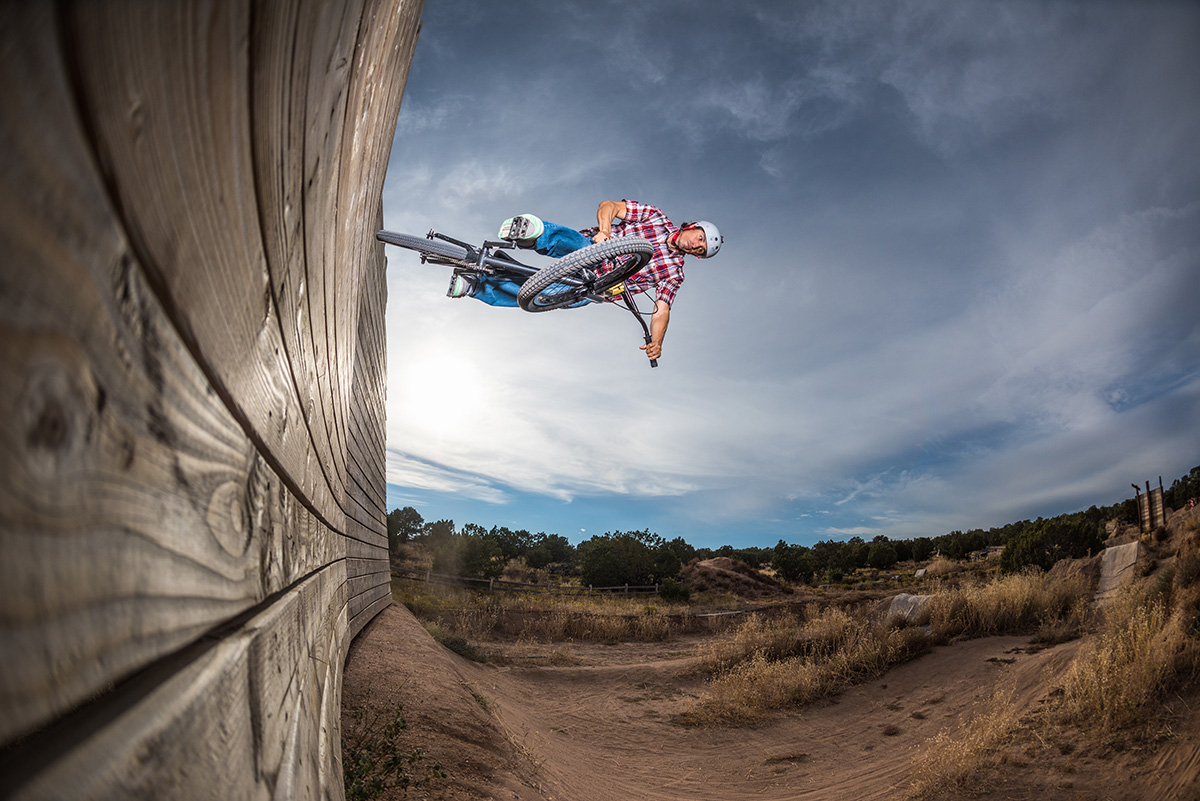
 View Gallery
View Gallery
